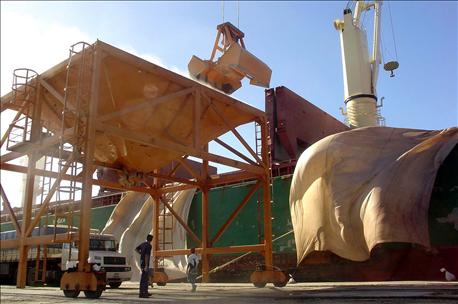
You’ve probably not given too much thought to your upcoming fertilizer needs, but Brazil’s farmers have been snapping up fertilizer like shoppers at a Black Friday sale. Fertilizer deliveries are up more than 12% versus the first half of 2015. That means 13.2 million tonnes were delivered to Brazilian farms during the period, says Anda, Brazil’s national fertilizer association.
One key reason why is that the ports are doing a better job of getting imported product in, and demurrages are down by about 50% for the first half of 2016 (importers ended up paying an average of $8.75 per tonne in demurrage fees alone last year.)
Favorable prices

Unloading fertilizer at Paranagua Port. (Photo: APPA)
But a bigger driver is the fact that with local fertilizer prices holding more or less steady, Brazilian farmers saw last month one of the best price ratios of beans to fertilizer ever. If you’ve never thought of your input prices in terms of bushels, one local article makes the point clear. In October of 2015, it says, a tonne of MAP cost an average of 10.4 bushels of soybeans at the Paranagua port. By last month, that same tonne of MAP was estimated to cost the equivalent of 5.8 bushels. Naturally, Brazilian producers are doing their math. Spot bean prices in Mato Grosso, Brazil’s top bean state, finished June at $11.77.
To pay for it, some 26% of that state’s 2016/17 bean crop had been sold, in part to cover cropping costs for the upcoming season. Some 1.4 million tonnes of 2016-17 beans were sold in June alone.
More beans?
Brazil is Brazil. It will produce a bigger crop this cycle than last. But probably not because of the fertilizer-soybean relative prices. Other factors like a tumbling economy, political uncertainty due to the current impeachment process against the president, and other factors figure in. Still, an FC Stone crop tour estimated the coming soybean area will come to 83.5 million acres—about 2% over last season’s 81.75 million.
It’s early for predicting the size of Brazil’s coming crop. But, for Brazil’s farmers, it’s not too early at all to stock up on the inputs they’ll need for that crop.
The opinions of the author are not necessarily those of Farm Futures or Penton Agriculture.
About the Author(s)
You May Also Like






